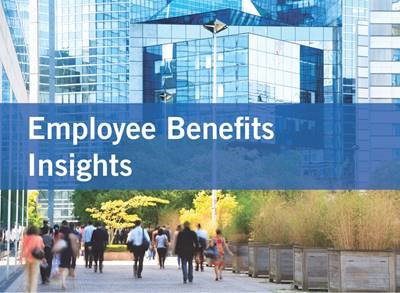Diving Into SECURE 2.0: New and Potentially Easier Ways to Make Withdrawals from 401(k) Plans

The SECURE 2.0 Act of 2022 (SECURE 2.0) significantly changes the legal and administrative compliance landscape for U.S. retirement plans. Foley & Lardner LLP is authoring a series of articles that take a “deep dive” into key SECURE 2.0 provisions that will affect how employers structure and administer their 401(k) plans, pension plans, and other types of employer-sponsored retirement plans.
In our prior SECURE 2.0 articles, we’ve discussed, student loans and 401(k) plan matching contributions, changes designed to simplify plan administration, and changes to the minimum required distribution rules. This month, we discuss new and potentially easier ways to make withdrawals from retirement plans, with a focus on how they relate to 401(k) and other defined contribution plans.
Emergency Savings Accounts and Distributions
Brief overview. As reported previously, SECURE 2.0 permits but does not require plans to add emergency savings accounts beginning with the 2024 plan year, but only non-highly compensated employees may contribute to these accounts. A non-highly compensated employee who later becomes a highly compensated employee may not make further contributions, but does retain withdrawal rights. Employees may affirmatively contribute, or employers may automatically enroll employees at up to three percent of pay, and contributions must be made on a Roth basis, with amounts attributable to employee contributions limited to $2,500, indexed for inflation (though amounts attributable to earnings may exceed that limit); and amounts contributed above the limit may be deposited into the participant’s regular Roth account. If the employer makes matching contributions under the plan, it must match any amount contributed to the savings account at the same rate as made for typical deferrals, but the match must be contributed to the regular match account. On this last point, SECURE 2.0 provides that plans may implement reasonable restrictions to prevent participants from contributing to the savings account merely to get the matching contribution followed by an immediate withdrawal from the savings account, but additional guidance is needed on what can be done and how to do that.
Items to think about. Employers and plan sponsors will want to work closely with their recordkeepers and payroll departments to determine whether these optional savings accounts are administratively feasible and who will shoulder the burden for their operations. For example, the overall cap (currently $2,500) is different than annual caps, so that needs to be tracked, and the spillover mechanics need to be in place from the beginning. In addition, because most, if not all, record keepers do not track which employees are highly compensated, that could be a large burden for payroll departments to shoulder, especially for employers with significant employee populations, so there should be a clear understanding of responsibilities and coordination from the outset. More guidance may help but will likely not solve all these issues.
New Penalty-Free Withdrawals
Brief overview. As we also discussed back in December, SECURE 2.0 creates several penalty-free withdrawal provisions, all of which may avoid the 10% early withdrawal tax and be repaid to the plan within three years of receipt.
- Domestic abuse. Starting in 2024, participants who take withdrawals up to the lesser of $10,000 (indexed for inflation) or 50% of their vested balance may avoid the 10% tax if they certify they have been the victim of domestic abuse by a spouse or domestic partner within the prior year.
- Emergency events. Also starting in 2024, participants who take withdrawals up to $1,000 (or smaller amounts that leaves at least $1,000 of vested benefits in the account afterwards) may avoid the 10% tax if they certify the amount is for a personal or family emergency. Importantly, and unlike the emergency savings accounts discussed above, emergency event penalty-free withdrawals may also be provided to employees who are highly compensated.
- Federal disasters. Effective for federal disasters occurring on or after January 26, 2021, participants may take withdrawals of up to $22,000 within 180 days after the disaster if they live in a federal disaster area and suffer an economic loss in connection therewith.
- Terminal illness. Effective immediately, participants who take withdrawals may avoid the 10% tax if they have been certified by a physician as being terminally ill (an illness or physical condition expected to result in death in 84 months or less).
Items to think about. For domestic abuse, emergency events, and federal disasters, SECURE 2.0 specifically provides that plans may be amended to permit in-service withdrawals for these circumstances, and that the limit for each type applies to all plans maintained within a single controlled group. For terminal illness, SECURE 2.0 does not specifically provide for withdrawals from either elective deferral or Roth accounts, though profit-sharing accounts could be available if the plan so provides.
Potential advantages absent plan amendments. While the government has promised additional guidance, we currently believe that participants may avoid the 10% tax on each of the foregoing withdrawals if they satisfy the underlying requirements (e.g., have been certified by a physician as terminally ill), irrespective of what the plan specifically says, or does not say, about such provisions, i.e., whether it has been amended to address the item (as applicable).
For example, if a plan sponsor amends its plan to specifically permit in-service withdrawals for domestic abuse situations, then presumably a participant meeting the underlying criteria may apply for and receive a distribution without incurring the 10% tax. But what about a plan without such a direct provision? For example, assume a participant terminates employment at age 37, receives a distribution of his $100,000 plan account shortly following termination, and has been a victim of domestic abuse during the seven months prior to termination. While that participant may incur an initial 10% tax on that distribution – as box seven of his 1099-R will list an early distribution using code one, he should nevertheless be able to recoup that incurrence when filing his tax return for that year – as noted by the 2022 instruction for 1040, which provides guidance for how to ultimately avoid or recoup the 10% tax if an incorrect distribution code is shown in box seven of Form 1099-R or “you qualify for an exception.”
In short, while it may be easier and better for the participant where the plan specifically provides for such a distribution, all is not lost for the participants if it does not.
Other assistance for those in need. Plans sponsors and employers may consider what additional information and resources to provide to employees and participants who inquire about or want to take advantage of penalty-free withdrawals. For example, what steps will they and recordkeepers implement to keep such information confidential or what notices should be provided to those specifically inquiring about withdrawals for domestic abuse. Are employees given access to and provided notice about employee assistance program resources or given information about the National Domestic Violence Hotline? Are there other ways employees can receive help or protection?
Repayment of Qualified Birth or Adoption Distributions
Brief overview. As we discussed in November 2020, the SECURE Act (which preceded SECURE 2.0) included a provision that allows individuals to receive distributions from their retirement plan in the case of birth or adoption without paying the 10% early withdrawal tax (known as a qualified birth or adoption distribution or QBAD). A QBAD can be recontributed to a retirement plan at any time and is treated as a rollover to the plan. The problem with the SECURE Act provision was the allowance of recontributions of QBADs at any time, whereas the Internal Revenue Code prevents a refund of the federal income tax paid on the QBAD from being provided to a taxpayer after the period of limitations for the individual’s income tax return has closed, which is generally a three‑year period from the date of the filing of the return. Thus, there was not a mechanism under the Code allowing someone who took a QBAD to recontribute the distribution more than three years later and amend their return to receive a refund for the income taxes that were paid in the year of the withdrawal. SECURE 2.0 amends the QBAD provision of the SECURE Act to restrict the recontribution period to three years. SECURE 2.0 is effective for QBADs made after December 29, 2022 and retroactively to the three-year period beginning on the day after the date on which such QBAD was received.
Items to think about. Plan sponsors and employers should send an informal notice to participants reminding them of the ability to repay a QBAD, even if it was taken from another qualified retirement plan. The plan sponsor should ensure that the permitted recontribution period for each QBAD is properly documented in its plan records since a QBAD received on or before December 29, 2022 must be repaid by December 31, 2025 while a QBAD received after December 31, 2022 must be repaid within three years of the date of the QBAD was received.
 |
As part of Foley’s ongoing commitment to provide legal insight to our clients and colleagues, our Employee Benefits and Executive Compensation Group has a monthly newsletter we call “Employee Benefits Insights,” where we provide you with updates on the most recent and pressing matters concerning employee benefits and other related topics. Click here or click the button to the left to subscribe. |

